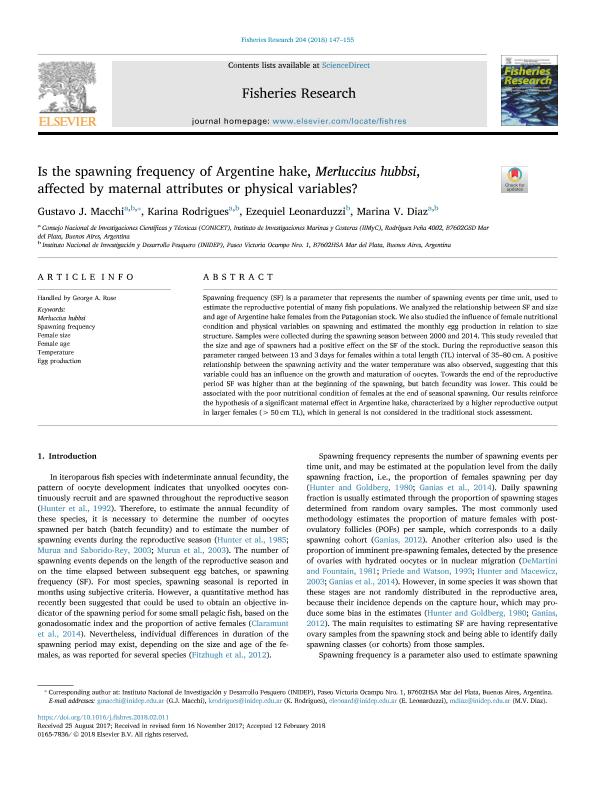Artículo
Is the spawning frequency of Argentine hake, Merluccius hubbsi, affected by maternal attributes or physical variables?
Fecha de publicación:
08/2018
Editorial:
Elsevier Science
Revista:
Fisheries Research
ISSN:
0165-7836
Idioma:
Inglés
Tipo de recurso:
Artículo publicado
Clasificación temática:
Resumen
Spawning frequency (SF) is a parameter that represents the number of spawning events per time unit, used to estimate the reproductive potential of many fish populations. We analyzed the relationship between SF and size and age of Argentine hake females from the Patagonian stock. We also studied the influence of female nutritional condition and physical variables on spawning and estimated the monthly egg production in relation to size structure. Samples were collected during the spawning season between 2000 and 2014. This study revealed that the size and age of spawners had a positive effect on the SF of the stock. During the reproductive season this parameter ranged between 13 and 3 days for females within a total length (TL) interval of 35–80 cm. A positive relationship between the spawning activity and the water temperature was also observed, suggesting that this variable could has an influence on the growth and maturation of oocytes. Towards the end of the reproductive period SF was higher than at the beginning of the spawning, but batch fecundity was lower. This could be associated with the poor nutritional condition of females at the end of seasonal spawning. Our results reinforce the hypothesis of a significant maternal effect in Argentine hake, characterized by a higher reproductive output in larger females (>50 cm TL), which in general is not considered in the traditional stock assessment.
Archivos asociados
Licencia
Identificadores
Colecciones
Articulos(CCT - MAR DEL PLATA)
Articulos de CTRO.CIENTIFICO TECNOL.CONICET - MAR DEL PLATA
Articulos de CTRO.CIENTIFICO TECNOL.CONICET - MAR DEL PLATA
Citación
Macchi, Gustavo Javier; Rodrigues, Karina Andrea; Leonarduzzi, Ezequiel; Diaz, Marina Vera; Is the spawning frequency of Argentine hake, Merluccius hubbsi, affected by maternal attributes or physical variables?; Elsevier Science; Fisheries Research; 204; 8-2018; 147-155
Compartir
Altmétricas




